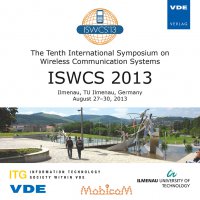Device-to-Device Communication Distance Analysis in Interference Limited Cellular Networks
Conference: ISWCS 2013 - The Tenth International Symposium on Wireless Communication Systems
08/27/2013 - 08/30/2013 at Ilmenau, Deutschland
Proceedings: ISWCS 2013
Pages: 5Language: englishTyp: PDF
Personal VDE Members are entitled to a 10% discount on this title
Authors:
Hassan, Khaled S.; Maher, Engy M. (Faculty of Information Engineering and Technology, German University in Cairo (GUC), New Cairo, Cairo, Egypt)
Abstract:
Direct device-to-device (D2D) communication between cellular equipments is proposed to increase data-rate and extend conventional cellular coverage. This underlying communication may generate interference due to resource reusing in the main and neighboring cells that lies in the interference range of D2D clusters. D2D links may only exist when the signal to interference-plus-noise ratio (SINR) at the evolved node basestation (eNB) does not fall below a target threshold selected based on a given quality-of-service (QoS). In this paper, we study the maximum possible separation between a D2D pair such that a minimum SINR constraint at the D2D receiver is preserved. Analytically and via simulations, we study two other important distances: the minimum allowed distance between the D2D receiver and the closest interfering node and the minimum possible distance between the D2D transmitter and eNB located in the same cell. This is investigated in different cellular arrangement with full resource reuse. Finally, we show superiority of D2D-plus-cellular network overall throughput compared to conventional cellular networks after considering our computed distance constraints.


